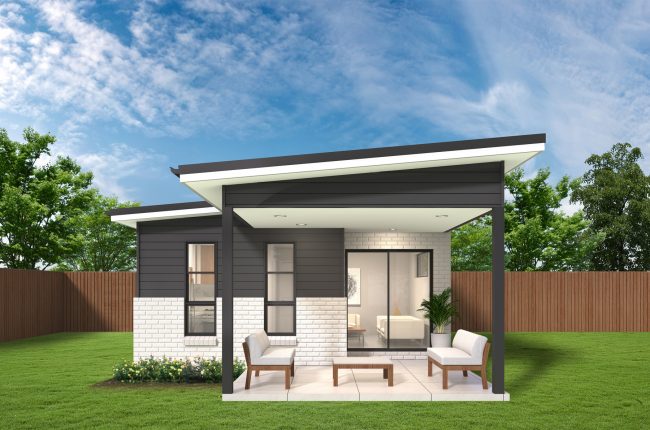A granny flat is an additional residence built within your own property’s boundaries. The most important feature is that they are self-contained. As a result, a granny flat is effectively a house within a house.
The term originates from the flats’ initial purpose. Homeowners would construct them for their older relatives, keeping the family unit intact.
They’re also appropriate for those looking to downsize from their current residence. You may construct a granny flat in your neighborhood and live there while renting out the main house.
They’re also a flexible property type that can be used on a variety of blocks. However, it’s critical that you follow the rules put forth by your local government.
If you are planning to build an apartment after your grandmother, you must be prepared.
How to get Started
Demand for these deceptive homes has grown over the last decade and the reason is clear. High interest rates and high debt have created a need for smarter housing and profitable investments.
But like everything worthwhile, the construction of a grand apartment has become mainstream, which means that potential challenges can accumulate. You will be in a market dominated by hungry investors and greedy developers, so the competition is tough. Whether you live wisely or invest wisely, here is everything you need to know before, during and after construction. More work and careful planning can go a long way to a smooth project, so keep this guide applicable everywhere.
The most important thing is to keep in mind patience. When the enthusiasm for your new grandmother is flat, there is usually an arsenal of questions, so make sure you have a reliable builder (don’t overdo it).
Happy planning!
Planning and storage
Your first step is to find the right design. It will depend on what exactly you want to achieve, such as the suitability of your block and your budget. If you are not an expert, it is good to talk to your builder.
If your builder can’t help you choose a design, run. There are better options. Once things are resolved, it’s time for your paperwork and approval process. It’s boring, but it needs to be done.
If we get continuity, we plan the construction in small, so sometimes at intervals. This way, we can finish everything on time and on budget without leaving you in the dark. We also pre-order the materials needed for the construction and safety of all related services and establishments. What you need to know: It takes at least 20 days to approve and complete your plans, so get started early. At this stage, we also recommend that you read all the information packs provided, as they contain important information about your project and all applicable regulations. To get started, go to the NSW Planning Portal.
WHO USES A GRANNY FLAT?
Granny flats are ideal for the following individuals:
- Those who have elderly relatives they’d like to keep nearby. Granny flats provide independence for the elderly while providing peace of mind for their families.
- People with children who wish to be independent yet can’t afford their own home.
Those who are willing to downgrade to a granny apartment in order to generate rental income from their primary residence.
WHERE SHOULD I BUILD MY GRANNY FLAT?
A transportable granny flat is a second house situated in the backyard of a property.
This type of structure can be transported to and from the property location as required.
There are several advantages to this design, including no planning permission, no time-consuming approvals process, cheaper construction costs, and quicker build periods.
STEP BY STEP GUIDE TO MAKE A GRANNY FLAT:
Here’s how you can make your own transportable granny flat.
1. Picking out designs
Granny flats come in many forms and sizes, so consider what you’ll be doing with the area before deciding on a design.
2. Construction
There is a study to be done when it comes to establishing a granny flat. Because laws and regulations differ from state to state, and even down to the LGA level, we recommend that anybody interested in building a granny flat contact their local council for further information.
3. The skills you’ll require
You may require the services of a few different tradespeople. You might require a drafter if you’re having granny flat designs drawn out. A function Object() { [native code] } will suffice if you’re taking the prefab way. For more intricate ideas, you could also require a painter, a plumber, and an electrician.
What you need to know: if your garden has an existing structure (such as a garden or cobbee house) must be destroyed. It is recommended to do this or to take a third party as a dismantling at our price, but you can do it at a surcharge.
As with the provisions of the Council, we must also inform our neighbors that you plan to build the bed of a grandmother. If you discuss with that, it’s a good idea if it’s so flexible and discuss it, it’s a good idea (and they know they did a very good job).
Normally, if a car is stored on your street, it may be necessary for a few days to clarify access to traders and heavy machines.
4. Price of a granny flat
The price of a granny flat is determined by the structure’s design and size. As a general rule, they range in price from $10,000 to $150,000.
5. Tips for designing a granny flat’s interior
It’s critical to be creative when it comes to granny flat interior design in order to make the room appear larger. Cutting the clutter with well-thought-out storage is one of the finest methods to do this. Shelving, under-bed storage, built-in wardrobes, hooks, and racks, as well as vertical space planning, are all options.
GET STARTED!
It’s time to talk to a builder now that you know what’s involved in developing your own granny flat.
Building a granny flat is not just about having space. You want to make sure that your granny flat is in the right location and has the right features so that the tenant can feel at home. Be sure to consider proximity to public transport, local amenities, and escaping traffic when deciding on this.
You will need to consider what type of environment and lifestyle your tenant wants when building their new home. If they want peace and quiet, then you should consider property in a more rural area with less daytime traffic.





More Stories
Decoding 5 Key Criteria for Picking the Best Plumbing Services
5 Signs It’s Time to Call a Plumber
Most Common Air Conditioner Repair Issues